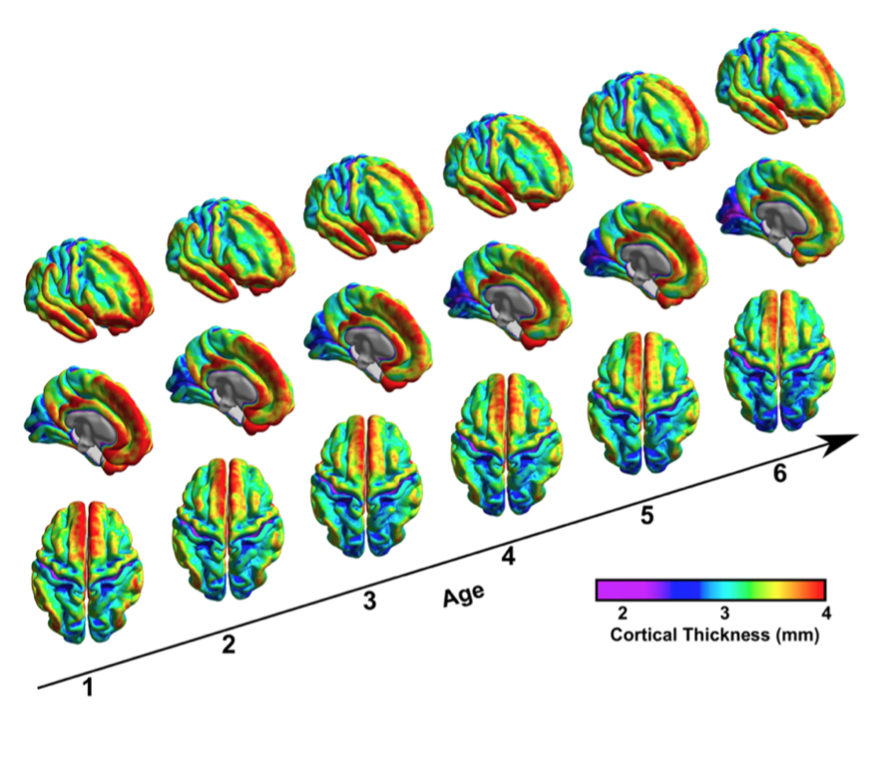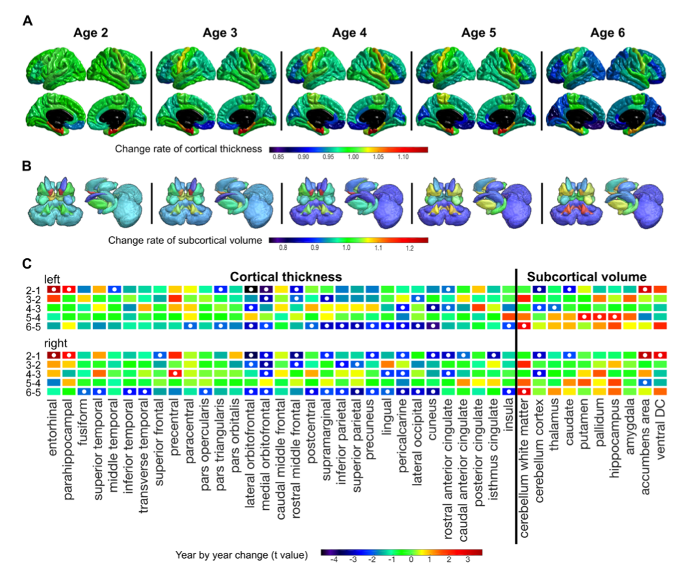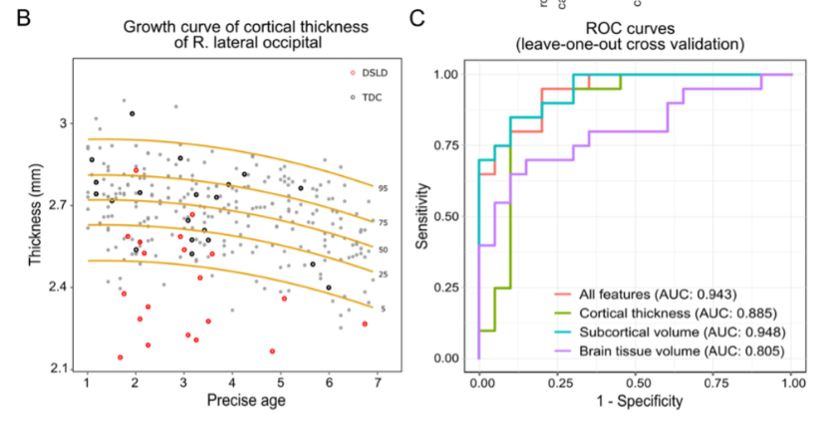TCCI Investigators Yang Zhi and Yuan Tifei are co-authors
TCCI Investigators, Professor Yang Zhi and Professor Yuan Tifei from the Mental Health Center affiliated with Shanghai Jiaotong University School of Medicine, Professor Fu Junfen and Director Zhang Hongxi from The Children’s Hospital affiliated with Zhejiang University School of Medicine and other co-authors jointly published the first growth curve model of the brain development of children aged one to six years old based on the accumulation of imaging data from children over the past decade. The model meticulously maps the structural changes of the brain during the golden phase of growth and developed an individualized growth status assessment method for children.
The research team first systematically charted the change rate of the main brain tissues (cortical volume, cortical thickness, white matter volume and subcortical volume) along with age (Figure 1), and then meticulously mapped each brain region including the cingulate gyrus, frontal cortex, amygdala and hippocampus to illustrate the corresponding change rate (Figure 2).

Figure 1. The dynamic changes of cortical thickness in the developmental phase

Figure 2. The year-by-year change rate of thickness and volume in different brain regions
The research team took another step forward to build the growth curve for children’s brains in order to implement “individualized brain examinations” and “brain development scores”. The team has built a total of 90 growth curve models for the morphological characteristics of the brain which can be used to evaluate the relevant position of brain structures in groups with the same age and gender (in other words, the “brain development scores”). This will help reveal if there are abnormalities in certain brain structures during the process of growth. By combining “brain development scores” with machine learning technology, the team can recognize delayed development of language among children with an accuracy rate of 87.5%. (Figure 3)


Figure 3. Growth curves of children’s brain (only partial brain regions displayed) and its application in detecting abnormal brain growth
The latest research provides a standardized model for individualized and refined evaluations of brain growth in the golden phase and important evidence for the early identification, diagnosis and individual assessment of multiple brain development-related diseases. The accurate assessment of “brain development scores” is a fundamental tool for research into children’s brains. The individualized growth curves of different brain regions are not only beneficial for revealing the developmental models of significant brain functions such as intelligence, emotions, personality, sense of happiness, and creativity, but also provide a new approach for customized teaching and cultivation of children’s education.
A paper describing the research has been published in the April 14, 2022 edition of NeuroImage, a world-renowned neuro imaging journal. TCCI Investigators Yang Zhi and Yuan Tifei are authors on the paper with Fu Junfen, Zhang Hongxi and Li Jia. The research was funded by The National Natural Science Foundation of China.
Specific figures from:http://phi-group.top/resources.html